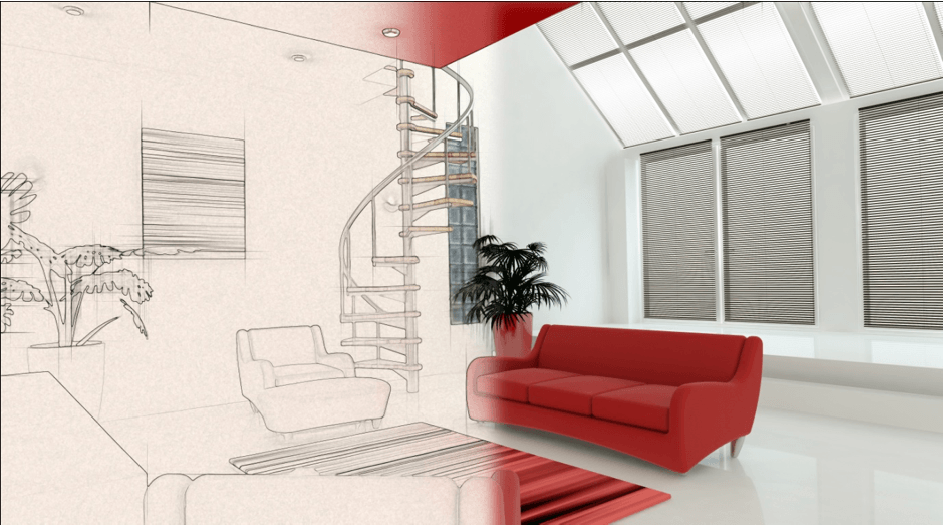Architecture vs. Interior Design - Which one is the right one for you?

Attempting to differentiate between the fields of architecture and interior design will put you on the horns of a dilemma. If both professions involve designing for the same space, then what exactly is the difference between an architect and an interior designer? And, which between the two would best suit your career interests?
We’re going to define this difference and then tell you how the two are connected.
They require the same skills, or do they?
Firstly, let us enlist the skills required for both professions and see the difference.
| Architecture | Interior Design |
|---|---|
| Sense of style with an appreciation for practicality | Sense of creativity with consideration for the thematic |
| Ability to analyse and critically assess problems | Ability to solve problems |
| Attention to detail | Space planning to maximize utility while preserving ambience |
| Ability to communicate with both technical and non-technical individuals | Ability to manage individual preferences within a single team or family |
| Knowledge of history, cultural and environmental concerns | Knowledge of styles and trends, both current and historical |
Surely, you noticed the similarities before you could point out the differences. However, the rationale and depth of expertise behind each skill is where the difference lies. And that is what will shape the ways in which you gain practical experience for a solid future.
Architect vs. Interior Designer – what’s the difference?
Architects design the structure of a building, determining the look of the facade and location of vital building systems. By traveling to building sites, they can analyse raw material costs, building codes compliance, functionality, adherence to safety regulations as well as inspect overall progress against timelines and budgets.
This discipline tends to appeal to students who excel in the sciences or maths and some of the best architects are actually structural engineers by initial training.

Architects are tasked with creating a structure with the dual purpose of being functional and appealing. For example, for a residential client, they plan and decide the structure and placement of the dining room, the bedroom/s, the living room, and make sure that the client’s space and functionality requirements are met. For buildings that fall under commercial categories, such as, restaurants, offices, and shopping malls, architects are also responsible for signing off on blueprints, and ensuring the maintenance of municipal by-laws around building and land usage. More importantly, an architect also needs to focus on technical factors such as lighting, ventilation, climate, material and flooring as these are fundamental to long-term usability.
The National Council of Architectural Registration Boards defines architects as “licensed professionals trained in the art and science of the design and construction of buildings and structures that primarily provide shelter. An architect will create the overall aesthetic and look of buildings and structures, but buildings also must be functional, safe, and economical and must suit the specific needs of the people who use them.”
Interior designers, on the other hand, artistically design the ambience and utility of an interior space based on human psychology and emotional aspects. They too travel to the site to study, plan and implement designs for the interiors. This specialization demands a flair for working with different kinds people in different circumstances; projects run on a tighter time frame, often making client, contractor and designer interface intense.

By focusing on aesthetics, they appeal to human connections and preferences. And they make suggestions to clients on how to maximize purpose within aesthetic themes. For example, according to the space calculated for a living room, an interior designer will decide placement of the sofa, its colour and design and will also recommend a sofa that caters to the family’s requirements such as ease of cleaning for families with small children and pets or depth of seating portion for elderly family members.
Qualifications
Requirements to enter either profession vary by country and locality. Below we have outlined what individuals in India need to consider.
What should you study to become an architect?
-
After completing 10+2 with compulsory subjects in the science and mathematics streams and scoring an aggregate of at least 50%, appear for the National Aptitude Test in Architecture (NATA), which will test your skills of observation, critical thinking, drawing, aesthetic sensitivity and sense of proportion.
-
Upon qualifying through NATA, you become eligible to enroll for the five-year Bachelor of Architecture course.
-
You can then elect to complete a Master of Architecture in which you can focus on specific areas such as landscape, environmental or digital architecture.
-
Thereafter, if you wish to further specialise in a particular field such as environmental planning, housing design, urban or transport planning, you can pursue a PhD program.

What should you study to become an interior designer?
-
Upon securing at least 55% marks in 10+2 with science and math, you would be eligible to take the multi-level entrance test.
-
Upon passing the entrance test, you can pursue a Bachelor of Arts in Interior Design.
-
After completing the degree course, you can gain exposure and experience by interning with a senior interior designer. Alternatively, you can continue your studies through a formal master’s program or by taking short courses on specific topics such as lighting, outdoor spaces and colour analysis.
Now that you are aware of the differences between an architect and an interior designer, you can make an informed decision for your career. Further growth and progress requires ongoing learning for up-skilling and re-skilling to incorporate and stay current with the flood of technological changes in both fields.
Maithili Raut, a partner with Red Architects in Mumbai, contributed to this article. Maithili’s 15+ years of experience ranges from museum and institutional design to interior design for retail stores, offices and residences to redevelopment of heritage structures